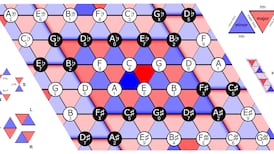THE SPORT that immediately springs to mind when you consider the risk of head injury is boxing. However, recent results from the US, reported by Greg Miller in Science (Vol 325, August 7th, 2009), strongly suggest that knocks to the head on the field of play in American football may show up later as brain damage in retired athletes. Alarmingly, some results indicate that American football may cause brain abnormalities even in players as young as 18 years old. On this side of the Atlantic, these results have implications for the game of rugby.
As Miller outlines, the phrase "punch drunk" describes a well-known condition in boxing, first medically described in 1928. Since then, many neuropathological examinations have recorded extensive brain damage in boxers. The condition, thought to be unique to boxing, was named dementia pugilistica. It was renamed as chronic traumatic encephalopathy (CTE) because it is now known that athletes other than boxers are also at risk.
The Sports Legacy Institute was founded in the US in 2007 to promote research on sports-related head injuries. The institute, in collaboration with Boston University, studies neurological and psychological symptoms in athletes, and examines donated brains from dead athletes for signs of pathology. Miller reports that, so far, signs of brain pathology have been found in 12 National Football League (NFL) players, at least four wrestlers and one soccer player. Many of these players died in their 40s. Only one post-mortem study of an NFL player’s brain failed to show pathological signs – a Denver Bronco running back who died aged 24.
The number of cases examined to date is small and most of the results have yet to be published in peer-reviewed journals. Nevertheless these preliminary results are worrying because, as one researcher quoted by Miller points out, “this type of brain pathology is virtually unheard of in people this young”. If ongoing research proves a connection between routine playing of American Football and brain injury, then very troublesome questions will arise for the NFL, coaches, parents and young players. When slices of post-mortem brain from cases of Alzheimer’s Disease and other neurodegenerative conditions are examined in a microscope, characteristic pathological changes are noted, including tangles of Tau protein and clumps of beta-amyloid protein. Tau proteins play an important stabilising role in normal nerve cells. They become chemically modified in Alzheimer’s disease and form tangles. Tau tangles have been detected in the brains of most of the NFL players examined to date, but the amyloid clumps seen in Alzheimer’s brains are usually absent. Tau pathology is normally absent from the brains of control non-athletes.
Miller reports other studies on retired living athletes, indicating that “football players who reported three or more concussions during their careers were five times more likely than those who reported no concussions to display signs of mild cognitive impairment, a frequent prelude to Alzheimer’s disease”. Also, those with more concussions were more likely to have suffered from depression.
American football is a violent game involving frequent high-impact collisions between players. The results reported here indicate that the large helmets worn by players are not sufficient to guard against serious brain injury. And, alarmingly, preliminary results indicate that routine playing of this game can cause brain lesions even amongst teenage players. We don’t play a significant amount of American football here, but rugby is popular, a high-impact contact sport played without the benefit of protective headgear.
The NFL is now carrying out detailed cognitive and psychological tests and neuro-imaging to look for brain damage on 120 retired players. The study includes a control group of 60 players who tried out for NFL but didn’t get any significant playing time. This will distinguish the effects of playing football generally and playing in the NFL specifically. It seems unlikely to Miller that all athletes who receive blows to the head develop CTE – the number, severity and proximity in time of the blows are likely to be important.
Obviously it is advantageous to a rugby player to be big and strong in order to withstand and to deliver tackles, but before the professional era began only some players stood out as being remarkably big. But now it seems to me that it is scarcely possible to play in any position if you have a normal physique, certainly at the higher levels of rugby. And this feeds down to schoolboy level with boys taking dietary supplements to encourage the development of muscle mass. All of this increases the severity of high-impact tackles between players who wear no head protection.
I am certainly not opposed to physical-contact sports and I don’t have a “namby-pamby” attitude towards risk, but I have felt for some time that rugby has become far too “pumped up”. These latest results from the US certainly give added cause for concern.
William Reville is associate professor of biochemistry and public awareness of science officer at University College Cork; http://understandingscience.ucc.ie









